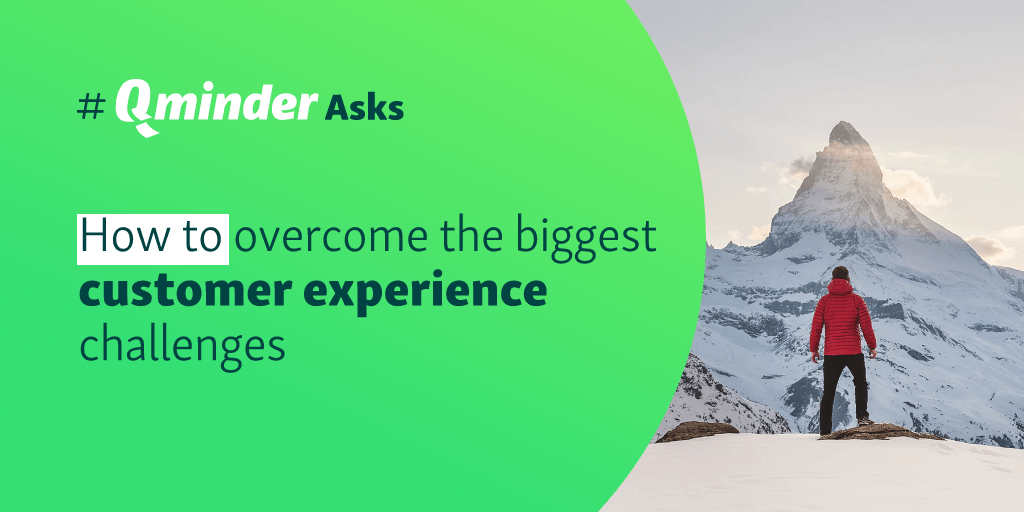Our planet is not in its best shape. For some years already, we’ve recognized our responsibility for negative changes in our environment and decided to do something about it.
After seeing the frightening images and statistics of animals suffering, trees being cut, air being polluted and climate being changed, you also decided the same and want to join the list of eco-friendly companies.
However, there are so many resources and guides that it becomes overwhelming and you just don’t know where to start. If that is the case, then our article will definitely help you out.
As 22 April marks the Earth Day, we decided to ask other companies:
What are their tips and practices about being eco-friendly?
Do their customers care about eco-friendliness?
What about their employees?
The motivation behind buying a product has shifted from only materialistic purposes. Gen Y became very aware of the society and environment where they live. Customers choices about companies they interact with went beyond the notion of quality products.
Your clients are more likely to become your loyal customers if your company is more environmentally friendly and “gives back to society”.
66% of customers responded that they will pay more with businesses that practice eco-friendly activities. This is especially true for the younger generation.
Here is how respondent companies practice eco-friendly activities.
Going paperless
Deforestation is a serious problem. According to the Food and Agriculture Organization’s report, we are losing 7 millions of hectares of forests every year.
One of the reasons for this is paper production. With all the digital alternatives we have for the paper today, we must feel guiltier than ever.
This explains why it was one of the most frequent answers from our respondents.
Even though there are numerous ways to reduce your carbon footprint at the office, including monitoring energy usage and encouraging employees to carpool or utilize public transportation options, coordinating a real effort to go paperless may just create the largest impact.
In a world where we once didn't give a second thought to printing out emails or daily agendas, we now need to be much more selective.
One way to fight the urge to print can include removing printers from each employee's office and sending all documents to one multi-use printer. This will make everyone think twice before they hit that 'print' button.
Also, introduce smartphone and desktop apps to offer other alternatives for document storage and organization. Once implemented, they can also be a huge time-saver!
Andrea Loubier, CEO of Mailbird
One of the first steps we took immediately upon starting our agency was digitizing all paperwork.
From policy applications to customer records, any piece of information that we can transform into an electronic file, we did.
Mack Dudayev, Founder of InsureChance Inc.
One simple trick we implemented to reduce unnecessary printing is by moving our sole printer to the storeroom and disabling the wireless functionality.
This means if someone wants to print, they have to really inconvenience themselves. We've gone from using 10 reams of paper every month to 6! This reduction in cost enabled us to switch to 100% recycled paper.
Rodney Yo, Owner of Best Online Traffic School
We go fully digital. Many of our employees do not know we own a printer. Our communication and activities have been moved to online collaboration tools. The only paper items that appear in our office are birthday cards!
Nina Król, Community Manager at Zety
Cutting down on your use of supplies is one of the most eco-friendly things you can do, especially when it comes to paper in an office.
Real estate involves many important documents and paperwork, so try storing your documents in digital files on the cloud, instead of on your hard drive or worse, in a filing cabinet.
Emailing for communication cuts down on paper waste, postage, and costs. And for your to-do lists, project management software and apps like Trello or Asana can all help to keep your checklists, notes, and communication digitally based, instead of printing things that end up getting thrown away!
When you need to print documents, upload them to your digital folders, and recycle them afterward.
These are all great ways to be mindful of your use of supplies and eliminate the problem before it starts. It's great for the environment and your wallet.
Derik Keith, Realtor & co-owner of Keith Home Team
Print minimal paper. It's always good to have a hard copy to keep on file but since everything is mostly digital now, just save paper and print only when needed.
Wash hand towels at home instead of buying paper towels for the office. It's easy to throw in a load of towels from the office every other week or so instead of using and probably wasting a lot of paper towels.
Anne Polland, Marketing Coordinator at NovellaBrandhouse
Qminder uses no paper
You’ve probably printed a waiting line ticket just for joining the queue. As soon as you’re done with the service that ticket goes to trash. Apart from paper tickets being impersonal, it is also wasteful and detrimental to the environment.
Qminder is a digital waiting line manager that uses no paper. With Qminder you will save paper and make the waiting process for your customers more personal and enjoyable.
Be smarter about electricity
Even though there are eco-friendly ways of producing electricity, such as solar panels and wind turbines, most of the electricity we use comes from fossil fuels that emit chemical compounds such as sulfur dioxide, nitrogen oxides and etc.
All these chemicals are big contributors to air pollution and harm the environment as well as public health.
Therefore, the motivation for saving electricity is not only due to cutting down monetary expenses but also because of being more environmental-friendly and responsible.
Let’s hear what our respondents had to say about it:
Bring in the natural light! The sun is so much more than a hot ball of gas that melts us every summer. It naturally boosts our energy, improves our mood, and oh yeah, it can light up any room in a building!
Instead of using lights and wasting more energy, open up a few windows! You'd be surprised how much natural light will pour into your space, light up your rooms, help mother earth and save you money.
Deborah Sweeney, CEO of MyCorporation.com
We made our employees change the settings on all their electronics (laptops, monitors, etc) to be more energy efficient.
We also changed out all the lights in the office to be triggered by motion. This ensures lights are not left on all night long. Both of these changes have helped reduce the amount of electricity we use on a daily basis.
Matthew Ross, Co-owner and COO of The Slumber Yard
Switch to LED light bulbs, which have gotten very cheap, use far less electricity, and need to be changed far less often.
Back when LEDs were a lot more expensive, I figured out that the owner of a business with a high enough ceiling to need a cherry picker to change light bulbs could save $4mm over the life of the bulbs, counting not only the electricity savings and cost of the bulb but also the labor and machinery costs to change them.
Shel Horowitz, Gong Beyond Sustainability
We stay eco-friendly by keeping our solar array clean to produce the most electricity while monitoring power usage during business hours.
The easiest tip is to recycle all waste, do not waste any electricity. Plant trees on your property. They consume our CO2 waste and produce Oxygen for us to breathe.
If feasible, look into installation of Solar or Wind arrays to produce your own power naturally to reduce reliance on coal or oil electricity production. This will lead to a much cleaner environment.
Jeff Moriarty, Marketing Manager at OxygenPlus Medical
But what about reliability?
What is especially important in our industry is considering the power that our servers and data centers run on. This is a growing source of fossil fuel consumption and carbon emissions.
Data Centers consume massive quantities of dirty power. Unfortunately, renewable energy is often not stable enough to power these sensitive tech facilities.
To address this issue, we’ve chosen to partner with environmental nonprofits that gauge and offset the dirty power used by servers and data centers. This allows us to provide websites and web services that are effectively powered 100% renewable energy.
Many businesses would benefit from using similar approaches to improve their own carbon footprint and to reduce the footprint of the services they’re offering to clients.
We have found the Carbon Fund to be a valuable partner in this effort, but many other nonprofits are providing similar services.
We’ve found this invaluable, and many other businesses would benefit from them as well.
Garrett Perks, Founder of EvenVision
Other suggestions
Easy access
Our office is located right next to the metro station so that we can travel by public transport and not by car. Many of our employees use bicycles to get to work too. There's plenty of space in our office and backyard to leave bikes.
Green inside out
We hold plants in most rooms and have access to a green garden we can work in on sunny days using natural light.
Reuse
Our kitchen is equipped with real, reusable dishes and utensils. We run a dishwasher on an eco-friendly programme once a day. Water distributors are installed on each floor to reduce the usage of plastic bottles. We also segregate our trash to organic waste, paper, plastic, and glass.
Work remotely
We love to socialize and meet at our friendly office, but we are also welcomed to work from home once per week. That's one day times the number of all our employees per week less traveling.
Nina Król, Community Manager at Zety
Fewer cars
Carpooling is not only convenient in terms of cutting down on the costs but also beneficial for the environment and the air quality.
On the other hand, carpooling is a perfect way to better socialize and get to know your coworkers. Fewer vehicles or more electric cars on the road means fewer greenhouse gas emissions.
Encouraging carpooling, biking, and other ways of getting to work that are not one person, one car.
Shel Horowitz, Gong Beyond Sustainability
In the near future, we plan on implementing employee incentives for purchasing hybrid or fully electric cars.
Mack Dudayev, Founder at InsureChance Inc
Customers & employees do care
If you’ve ever wondered if someone cares about your efforts of being eco-friendly, the answer is yes! Your customers and employees are one of them.
According to a research, around 79% of respondents from Gen X (35-49) answered that it is extremely or very important that companies implement programs to improve the environment. The percentage goes even higher and reaches 85% when it comes to Millennials (21-34).
Did you know that Millennials are the largest generation in the US labor force? It is highly possible that Millennials are your most frequent customers and so should be the majority of your employees.
Customers do care about us being eco-friendly, we have received many praises about our passion for it.
Employees also actively recycle all possible waste we produce, and we take a weekly trip to the recycling center to deposit all plastic, metal, and paper waste.
Jeff Moriarty, Marketing Manager at OxygenPlus Medical
Employees definitely care about being eco-friendly. I think there's just more awareness and they get to feel good about themselves, which motivates them in the workplace.
We're in the process of applying for a green business certification, which has really boosted morale. I would recommend starting small and going for the easy wins. Get everybody on board and then expand the scope as people see tangible results. If something doesn't work, you shouldn't give up - find a way around and iterate.
Rodney Yo, Owner at Best Online Traffic School
And there you have it! Hopefully, the above-provided tips will help you to start being an eco-friendly company.
Starting small is important, otherwise, it becomes overwhelming. As soon as you get accustomed to the eco-friendly practices you should consider not only lowering the negative effects but also producing the positive ones!
But let’s leave that one for another article! :)






